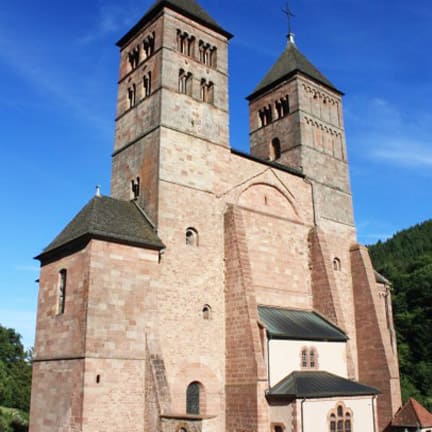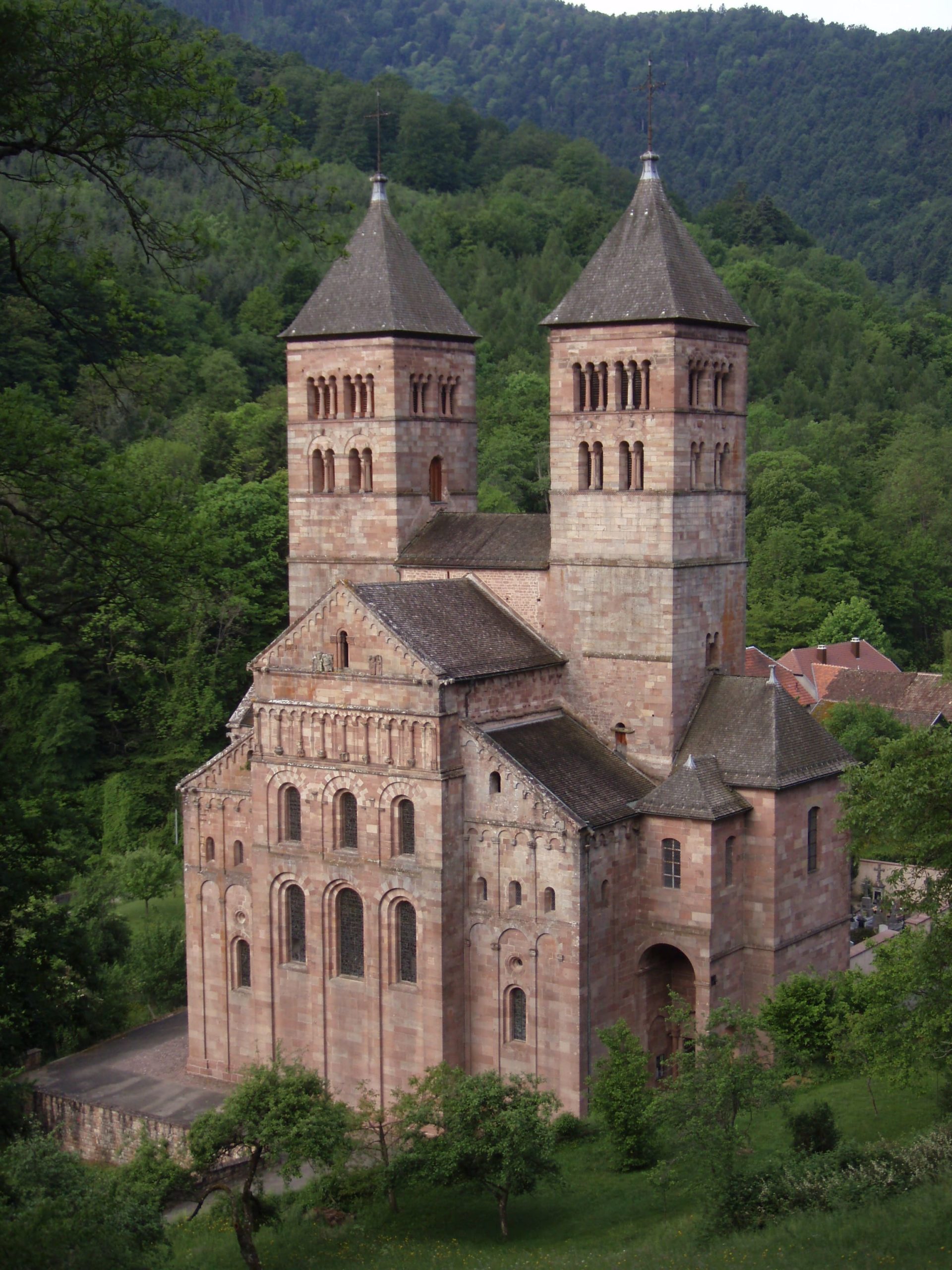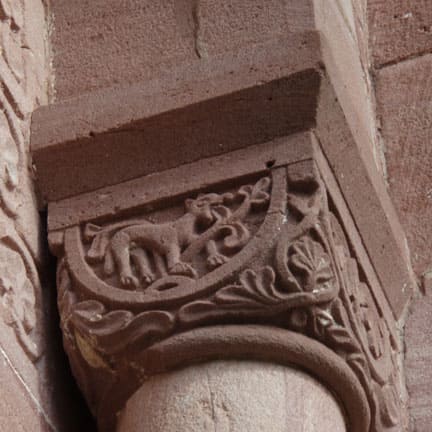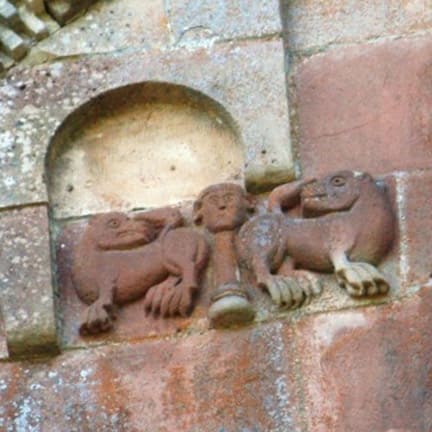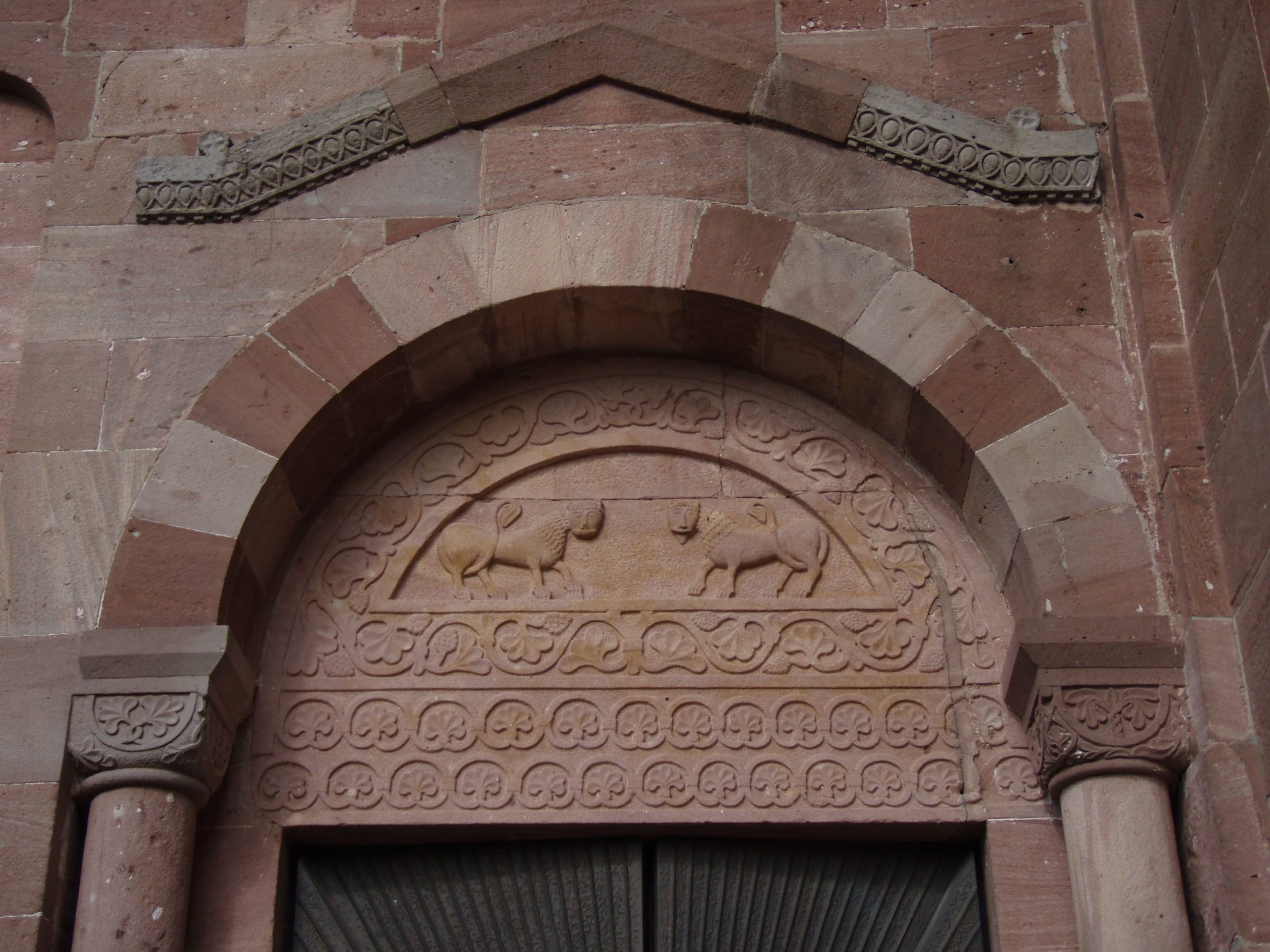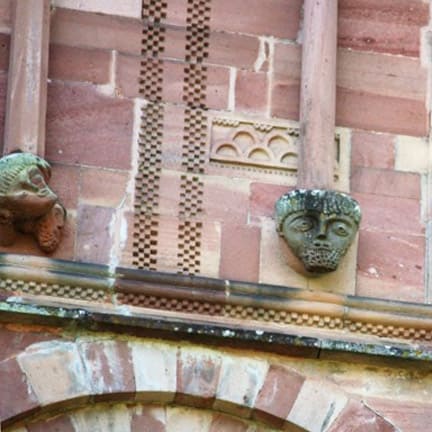Murbach
Ancienne église abbatiale Saint-Léger
Presentation
All that remains of this powerful abbey, founded in 726 by Saint Pirmin and rebuilt in Romanesque style during the 12th century, is the impressive choir with its flat chevet flanked by side chapels
and a projecting transept flanked by two square towers. The Romanesque nave was demolished in the 18th century to make way for a Baroque construction that was never built. The chevet, whose proportions and monumental layout are reminiscent of a cathedral, rises over 5 levels. The third, and most sumptuous, is a gallery of 17 different colonnettes. The sculpted decoration incorporates oriental motifs, such as the superb „Gate of the Lions“ in the tympanum of the south arm of the transept.
History: According to tradition, it was Saint Pirmin (a Visigoth driven from the island of Reichenau on Lake Constance) who, in 727, introduced the rule of Saint-Benoit to the monks of Irish origin who first occupied the site. Around the same time, Eberhard, grandson of Alderic, Duke of Alsace, endowed the abbey where he spent his last years with numerous properties. The first church in Murbach was consecrated in 728. The abbey flourished under the Carolingians. The Hungarians brought an abrupt end to this fine period. Saint Adelaide (wife of Emperor Otto the Great) was the great benefactress of the abbey, which opened up to the reform and influence of Cluny. Hugues de Rothenburg and Berthold de Steinbrunn were at the head of the princely abbey when the Romanesque basilica was consecrated in 1216. The abbey suffered a severe decline during the Thirty Years’ War. In 1680, Murbach came under the sovereignty of the King of France until 1764, when the monks left Murbach for Guebwiller. The Revolution soon afterwards destroyed the illustrious abbey.

